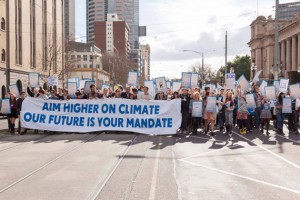Communication = Community: A Modern Environmental Movement Approach

Getting positive feedback on taking up Environmental Superman oddly gave me another inner thrust towards limiting plastic consumption just when I thought I was sinking. It’s so strange how a gold star here or a “good job” there really helps. Even though our only form of ‘community’ was a few feedback responses on each other’s blogs, I felt reassured knowing that we had a group that faced the same difficulties. It felt strange near the end of the sustainable behavior challenge to suddenly find a community, however. I found myself wishing I could have had Emily’s optimism, Dane’s research and development initiative, and Nick’s insight to fall back on.
If all I needed was a bit of feedback and community to keep me going, then what would a real sense of community around an issue feel like? I started looking at 350.org again to see if there were local groups, and alas there were. Though I don’t think there are any in Pennsylvania, the thought that there are community organizations to promote sustainability gives the movement a sense of reality. Group leaders from communities, schools, or even places of worship, “can use this website to help organize meetings, plan local projects, track progress, post updates…” and more (http://local.350.org/groups/). It’s interesting how a media/communication tool can truly help the efficiency of solving participation problems. In fact, when a representative from Easton was defining the issue of low recycling participation, he said that poor communication was holding the city back. With technological innovation easing communication and creating group interaction, is there ever truly a lack of community? Even the blog community itself was designed over the internet for students to comment on each other’s work. Perhaps internet communication provides an answer where there is a lacking sense of community.
I argued before that I lacked motivation due to a lack of community. I stand by that statement. Even a social media community could have given me a sense of passion, inclusion, and importance that I was missing. If I had to reflect on one definite difference in my experiences from others in my No Plastic group, it would be between Dane and my interactions with others. While Dane had a sense of community (e.g. his parents would ask how the challenge was going), my friends were (for the most part) not that keen to keep up with my plastic woes. He removed barriers by using his community to break his habits via reminders and removing barriers. My lack of community made my effort feel useless.
Our tactics for change were similar in Team No Plastic: we used sticky notes, we cut down on bottles by using reusable ones, and we recognized the importance of waste and pollution. Creating our No Plastic Team a bit sooner could have helped to mobilize the four of us and help us think of alternative solutions. If anything, a community allows for people to feel that they are a part of something.
Leave a Reply